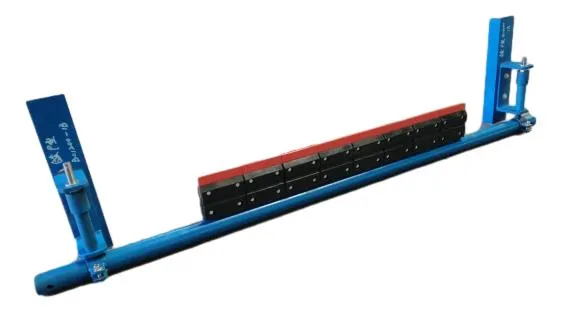 Afrikaans
Afrikaans  Albanian
Albanian  Amharic
Amharic  Arabic
Arabic  Armenian
Armenian  Azerbaijani
Azerbaijani  Basque
Basque  Belarusian
Belarusian  Bengali
Bengali  Bosnian
Bosnian  Bulgarian
Bulgarian  Catalan
Catalan  Cebuano
Cebuano  Corsican
Corsican  Croatian
Croatian  Czech
Czech  Danish
Danish  Dutch
Dutch  English
English  Esperanto
Esperanto  Estonian
Estonian  Finnish
Finnish  French
French  Frisian
Frisian  Galician
Galician  Georgian
Georgian  German
German  Greek
Greek  Gujarati
Gujarati  Haitian Creole
Haitian Creole  hausa
hausa  hawaiian
hawaiian  Hebrew
Hebrew  Hindi
Hindi  Miao
Miao  Hungarian
Hungarian  Icelandic
Icelandic  igbo
igbo  Indonesian
Indonesian  irish
irish  Italian
Italian  Japanese
Japanese  Javanese
Javanese  Kannada
Kannada  kazakh
kazakh  Khmer
Khmer  Rwandese
Rwandese  Korean
Korean  Kurdish
Kurdish  Kyrgyz
Kyrgyz  Lao
Lao  Latin
Latin  Latvian
Latvian  Lithuanian
Lithuanian  Luxembourgish
Luxembourgish  Macedonian
Macedonian  Malgashi
Malgashi  Malay
Malay  Malayalam
Malayalam  Maltese
Maltese  Maori
Maori  Marathi
Marathi  Mongolian
Mongolian  Myanmar
Myanmar  Nepali
Nepali  Norwegian
Norwegian  Norwegian
Norwegian  Occitan
Occitan  Pashto
Pashto  Persian
Persian  Polish
Polish  Portuguese
Portuguese  Punjabi
Punjabi  Romanian
Romanian  Russian
Russian  Samoan
Samoan  Scottish Gaelic
Scottish Gaelic  Serbian
Serbian  Sesotho
Sesotho  Shona
Shona  Sindhi
Sindhi  Sinhala
Sinhala  Slovak
Slovak  Slovenian
Slovenian  Somali
Somali  Spanish
Spanish  Sundanese
Sundanese  Swahili
Swahili  Swedish
Swedish  Tagalog
Tagalog  Tajik
Tajik  Tamil
Tamil  Tatar
Tatar  Telugu
Telugu  Thai
Thai  Turkish
Turkish  Turkmen
Turkmen  Ukrainian
Ukrainian  Urdu
Urdu  Uighur
Uighur  Uzbek
Uzbek  Vietnamese
Vietnamese  Welsh
Welsh  Bantu
Bantu  Yiddish
Yiddish  Yoruba
Yoruba  Zulu
Zulu conveyor guide roller
Understanding Conveyor Guide Rollers Essential Components for Efficient Material Handling
In the realm of industrial automation and material handling, conveyor systems serve as the backbone for various industries, including manufacturing, packaging, and logistics. One critical component of these conveyor systems is the conveyor guide roller. These rollers play a pivotal role in ensuring the smooth operation of conveyors, enhancing efficiency, and reducing wear on the system as a whole.
What Are Conveyor Guide Rollers?
Conveyor guide rollers are cylindrical components mounted on the conveyor frame or within the conveyor mechanism. They are designed to guide the movement of materials along the conveyor belt or chain, ensuring items are transported in a straight and controlled manner. These rollers can be fixed or adjustable, depending on the specific application and requirements of the conveyor system.
Functions of Conveyor Guide Rollers
1. Guidance and Alignment One of the primary functions of guide rollers is to help maintain the alignment of the conveyor belt or chain. Proper alignment is crucial to prevent materials from falling off the conveyor or becoming jammed. Guide rollers ensure that the load remains centered, minimizing the risk of accidents and maximizing operational efficiency.
2. Reducing Friction Conveyor guide rollers are designed to minimize friction between the moving conveyor components. By providing a smooth surface for the belt or chain to travel over, these rollers reduce wear and tear and extend the life of the conveyor components. This reduction in friction also ensures that energy consumption is kept to a minimum, leading to cost savings for the operation.
3. Support and Stability Guide rollers offer additional support to the conveyor system, particularly in horizontal and inclined configurations. By distributing the weight of the conveyed materials evenly, they prevent sagging and potential damage to the conveyor belt. This stability is particularly important in dynamic environments where heavy loads are frequently moved.
4. Impact Absorption In many applications, materials may drop onto the conveyor system from a height. Guide rollers help absorb the impact of these materials during loading, extending the lifespan of both the conveyor belt and the structure. This feature is vital for maintaining operational safety and minimizing downtime for maintenance or repairs.
conveyor guide roller

5. Versatility Conveyor guide rollers come in various sizes, materials, and designs to accommodate different types of conveyor systems and applications. From light-duty applications in packaging to heavy-duty systems in mining, guide rollers can be customized to meet the specific needs of any operation.
Selecting the Right Conveyor Guide Rollers
When selecting conveyor guide rollers, several factors must be considered to ensure optimal performance
- Load Capacity The rollers must be able to support the maximum weight of the materials being conveyed. This is crucial in preventing roller failure and maintaining system integrity.
- Material Compatibility The material of the guide rollers should be chosen based on the product being conveyed and the environmental conditions. For example, rollers made of durable rubber are suitable for handling fragile items, while steel rollers are ideal for heavier, more robust materials.
- Environmental Conditions Factors such as temperature, humidity, and exposure to chemicals or dust should influence roller selection. It is essential to choose guide rollers that can withstand the specific conditions of the working environment.
- Adjustability Depending on the design of the conveyor system, adjustable guide rollers may be necessary to accommodate varying widths of materials or changes in operational requirements.
Conclusion
Conveyor guide rollers are integral to the functionality of conveyor systems. By ensuring proper alignment, reducing friction, providing stability, and absorbing impacts, they play a crucial role in enhancing operational efficiency and safety. As industries continue to evolve and adapt to new challenges, the importance of selecting the right guide rollers cannot be overstated. Investing in high-quality conveyor guide rollers can lead to significant long-term benefits, including reduced maintenance costs, increased productivity, and improved material handling. In an increasingly competitive market, businesses that prioritize the efficiency of their conveyor systems will undoubtedly stay ahead of the curve.
-
Revolutionizing Conveyor Reliability with Advanced Rubber Lagging PulleysNewsJul.22,2025
-
Powering Precision and Durability with Expert Manufacturers of Conveyor ComponentsNewsJul.22,2025
-
Optimizing Conveyor Systems with Advanced Conveyor AccessoriesNewsJul.22,2025
-
Maximize Conveyor Efficiency with Quality Conveyor Idler PulleysNewsJul.22,2025
-
Future-Proof Your Conveyor System with High-Performance Polyurethane RollerNewsJul.22,2025
-
Driving Efficiency Forward with Quality Idlers and RollersNewsJul.22,2025





























